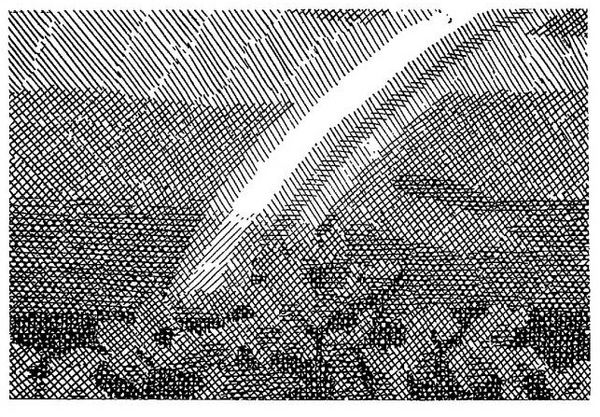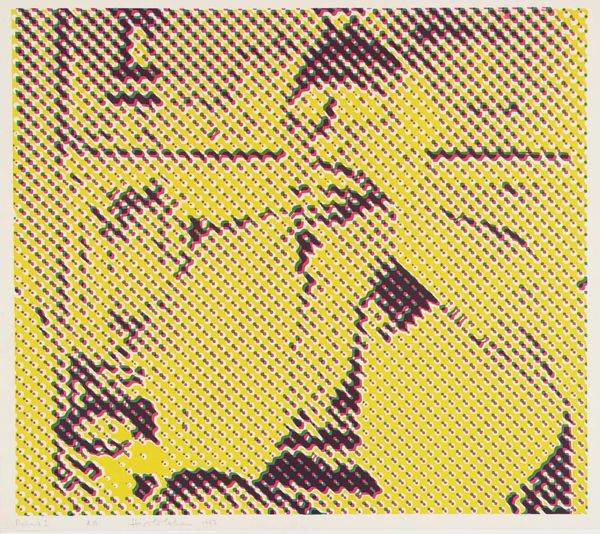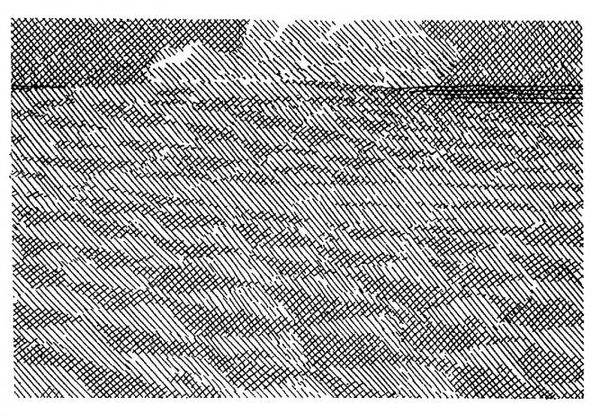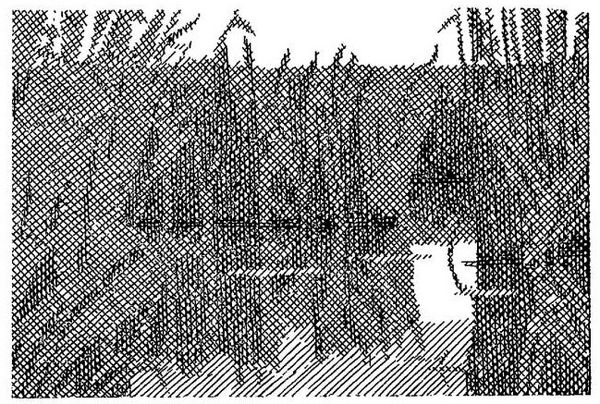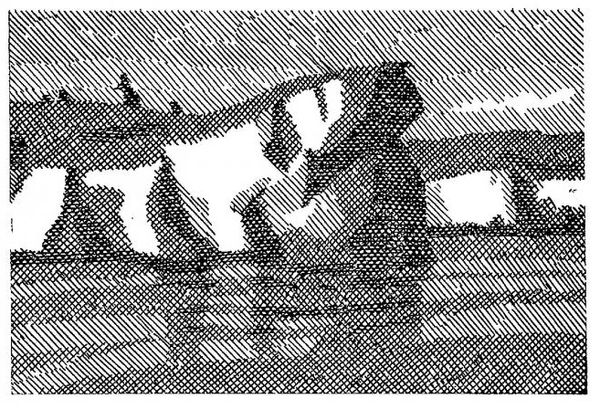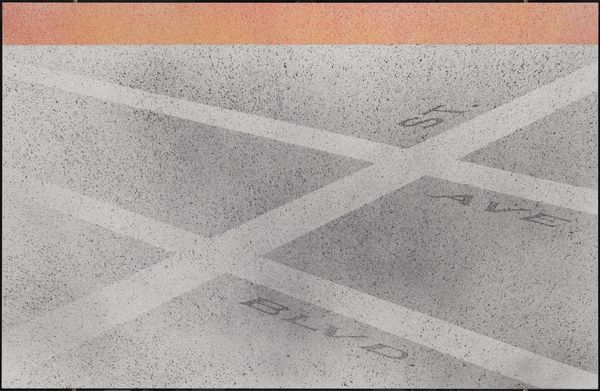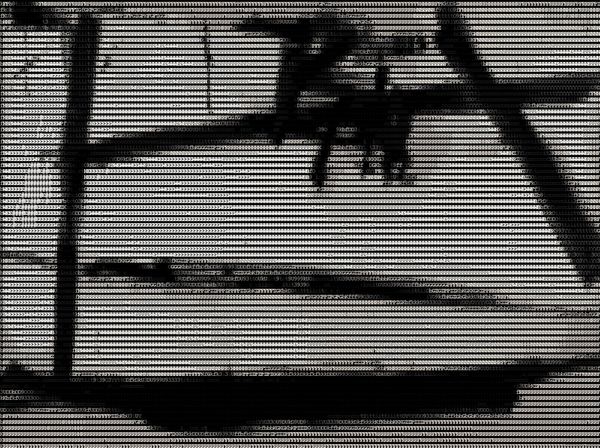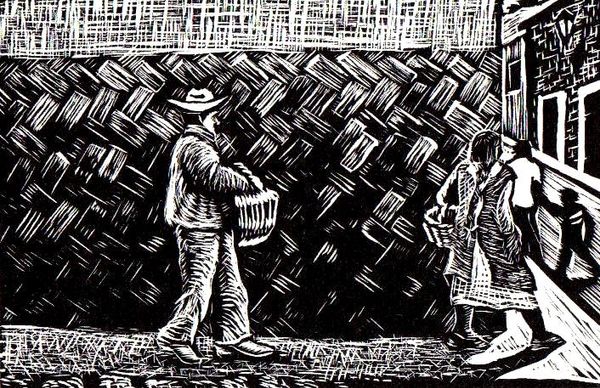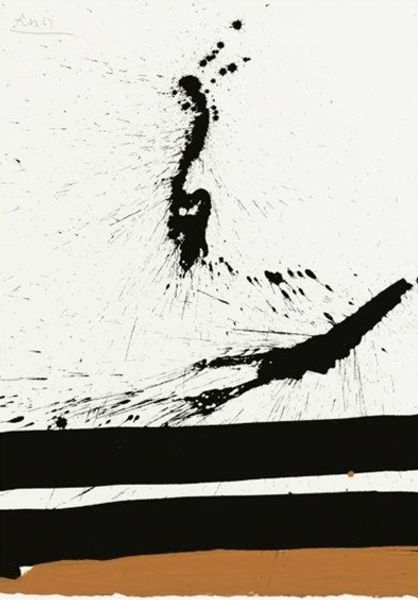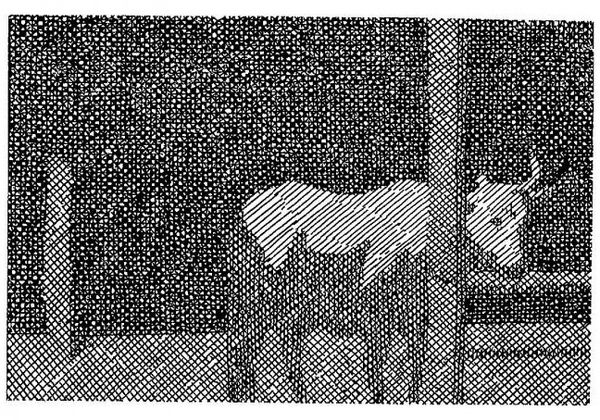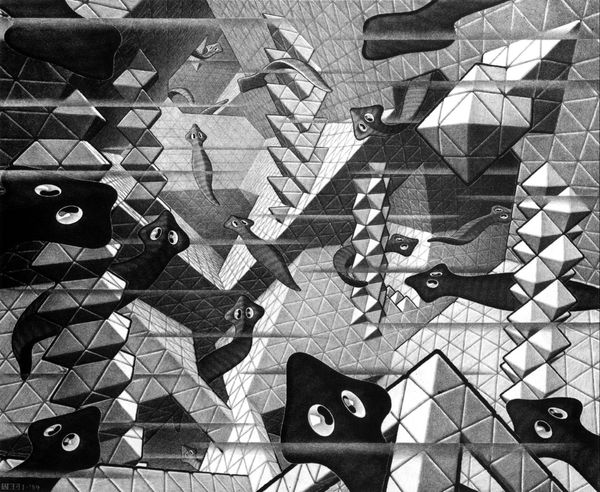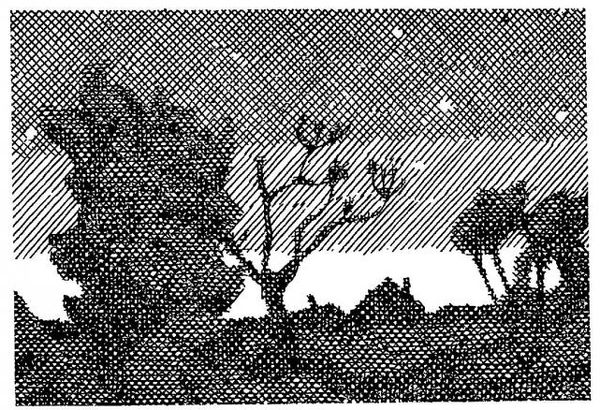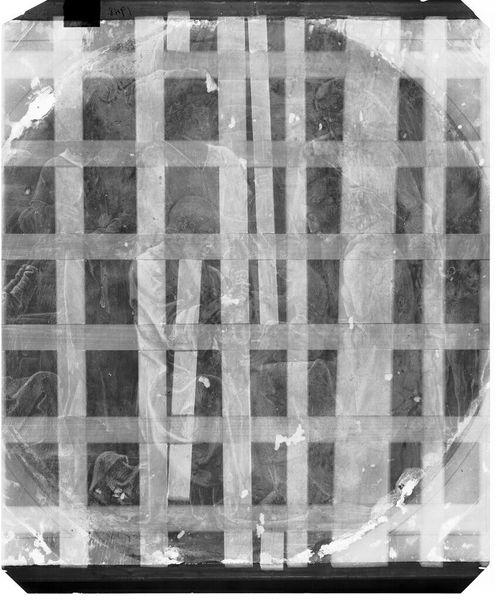
Illustration for the collection of short stories by Yevhen Gutsal "In the stork village" 1969
0:00
0:00
drawing, ink
#
drawing
#
line-art
#
rippled sketch texture
#
neat line work
#
line drawing illustration
#
crosshatching
#
ink line art
#
linework heavy
#
ink
#
dark black outline
#
thin linework
#
intricate pattern
#
line
#
monochrome
Copyright: Hryhorii Havrylenko,Fair Use
Curator: We’re looking at Hryhorii Havrylenko's illustration from 1969, specifically created for Yevhen Gutsal's short story collection, "In the Stork Village". It's an ink drawing, minimalist in its palette. Editor: My first thought is of textiles – almost like a woven landscape. All those precisely rendered lines… the varying density of the marks creating a visual texture that’s quite compelling. Curator: It is remarkable. Havrylenko was very active in illustrating Ukrainian literature. These drawings were reproduced in books circulating within Soviet Ukraine – offering a kind of subtle visual resistance. It's a representation of rural life and perhaps a way to connect to a disappearing past, certainly something the Soviet regime wasn't keen on promoting. Editor: And the labour involved! The crosshatching, the painstaking detail... it speaks volumes about the value placed on craft, on handmade aesthetics at a time when industrialisation was radically transforming the landscape – literally and figuratively. Are these linear patterns visual codes, you think? Is it some attempt to formalize, codify what's known of the village? Curator: I think there's an attempt to give solidity to the village, especially as it existed in memory, the image made stable in a period of intense change, when tradition was being sidelined. Havrylenko's illustrations played a part in maintaining cultural memory – offering readers access to stories and images which diverged from official Soviet narratives. The heavy lines are really noticeable. Editor: Indeed. And note the use of inexpensive ink on what was likely ordinary paper; the material reality is essential. This was art for the people, art made from everyday materials accessible to many, a potent and democratic gesture, if quietly so. Curator: A means to resist, one drawing at a time. Editor: Exactly, embedding counter-narratives in the mundane stuff of everyday life. Fascinating how an image's impact hinges on recognizing the significance of both its message and means of distribution.
Comments
No comments
Be the first to comment and join the conversation on the ultimate creative platform.
